Worth 10% of your course grade
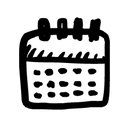 Important Dates
Important Dates
- September 23: Portfolio Peer Review
- September 25: Portfolio Due Date
- October 2: Portfolio Deadline (end of grace period, no work accepted after 11:59 PM)
Goals
The Project Assignment
 You will design and create an academic (or professional) portfolio where you will publish the work that you do for this course and other course you have and will take at Virginia Tech. You will write and design text for online presentation, use digital images (and if desired, video and audio), and use basic HTML and CSS syntax.
You will design and create an academic (or professional) portfolio where you will publish the work that you do for this course and other course you have and will take at Virginia Tech. You will write and design text for online presentation, use digital images (and if desired, video and audio), and use basic HTML and CSS syntax.
You’ll create your web portfolio using WordPress, which will provide the basic tools you need so that you can focus on your multimodal design and learning the basics of HTML and CSS coding.
Step-by-Step Details
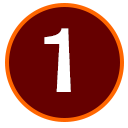 Step 1: Create a WordPress blog and a backup plan
Step 1: Create a WordPress blog and a backup plan
Setup a Blogs@VT (recommended) site, a WordPress.com blog, or a self-hosted WordPress blog for your Web Portfolio. Realize that your blog will be a public site, so anyone on the Internet can read it. Make wise, professional choices about naming your site and the information you will display.
Decide on a backup plan for yourself. The easiest option is to copy and paste things out into files on your Google Drive, a flash drive, or your own computer. Dropbox works too. You can also go to Tools on the left and then Export to download your content as an XML file.
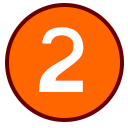 Step 2: Set your goals for the project.
Step 2: Set your goals for the project.
You have the opportunity to aim for the grade you want to earn for the projects in this class. The options below outline what you need to do for the grade you want to receive. No one aims for a D or an F, so I have not included any details for below-average work. If you really want a D, just put in minimal effort and do sloppy work.
|
|
 Complete the C-level project and then use design elements (like menus, widgets, headings, layout, etc.) to make your project visually appealing and easy to read and navigate. Your site should have no more than two or three minor errors in image editing, grammar, spelling, style, punctuation, mechanics, linking, and/or formatting. Complete the C-level project and then use design elements (like menus, widgets, headings, layout, etc.) to make your project visually appealing and easy to read and navigate. Your site should have no more than two or three minor errors in image editing, grammar, spelling, style, punctuation, mechanics, linking, and/or formatting. |
|
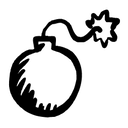 Warning! No grade is guaranteed.
Warning! No grade is guaranteed. Make sure your project is error-free, fully-developed, and ready to share with the intended audiences. Any work that is incomplete or that contains multiple errors will not earn an A or an A-.
For instance, say the writer aimed for a B and used design elements to make the project visually appealing, but the finished text was full of typos and the image was blurry. The project earns a C rather than a B.
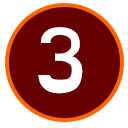 Step 3: Customize your blog
Step 3: Customize your blog
Use the tools within WordPress to customize your site so that it represents you. You need to complete the following tasks:
- Choose a Theme for your blog (under the Appearance tab on the left).
- Use the Widgets (also under the Appearance tab on the left) to customize your sidebar(s), header, and footer (as applicable).
- Use Menus (again under the Appearance tab on the left) to set up the menus for your site.
If you need help, try the WordPress Documentation and FAQs. Try contacting 4Help if you need additional help outside of class. Also remember that you can use the step-by-step WordPress Tutorials & Training at Lynda.com.
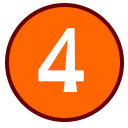 Step 4: Set-up your content
Step 4: Set-up your content
You will write outline the sections required for your site, after looking at example sites and thinking about your goals. At a minimum, you will include the following content for your site:
- Posts: You will write at least two posts on topics related to your career goals and portfolio topic. Much in-class writing going forward will be done in blog posts. By the end of the term you should have a robust blog as part of your site. By the due date, however, you only need two.
- Pages: You will write the following:
- an about page, where you tell visitors about yourself. You can revise your identity statement for this page.
- a site information page (like a colophon in a book), where you tell us about the tools you used and the design decisions you made. Be sure that you give credit for any resources (like an image) that you use.
- pages necessary for your portfolio, such as pages for your creative works or essays you have written.
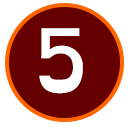 Step 5: Submit your project.
Step 5: Submit your project.
When you are finished with the project, you will upload your project file in the Assignment tool on Canvas. Details on how to submit your work will be included in the post for the due date (September 25).
You will use the Comment section for reflection on your project. In this section you will tell me the following:
- your intended audience and purpose.
- the grade that you have aimed for.
- how well you reached your goals.
- any other information I need to know to understand the work you did on your project.
Be sure that you follow the instructions, include the relevant information, and proofread your memo. If you skip adding the Comment, you lower your grade on the project. Remember that there are no rewrites or revisions after work is graded.
 write and design web content, use digital images (and if desired, video and audio), and recognize basic HTML and CSS syntax.
write and design web content, use digital images (and if desired, video and audio), and recognize basic HTML and CSS syntax.


